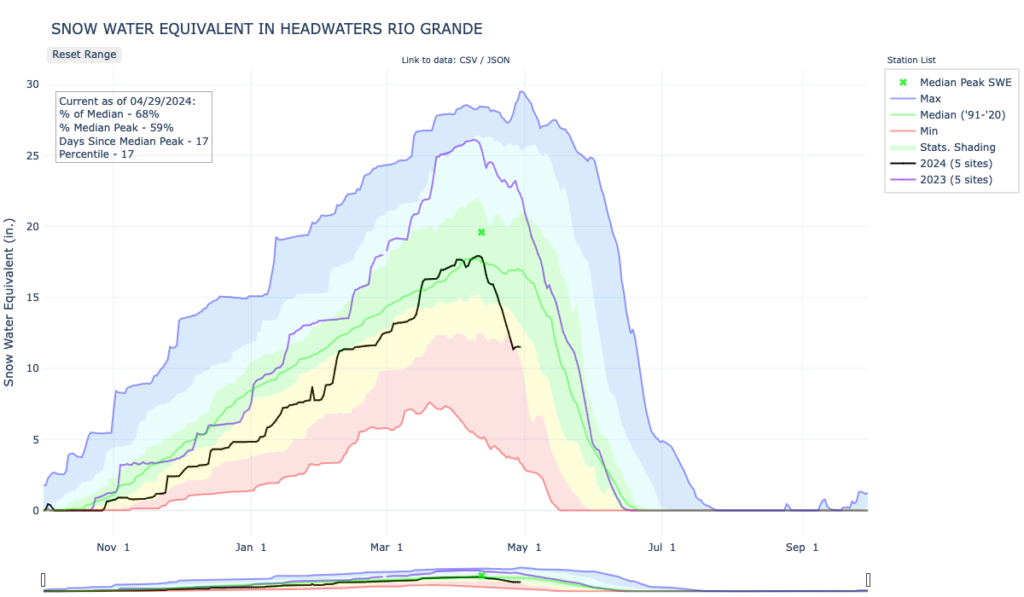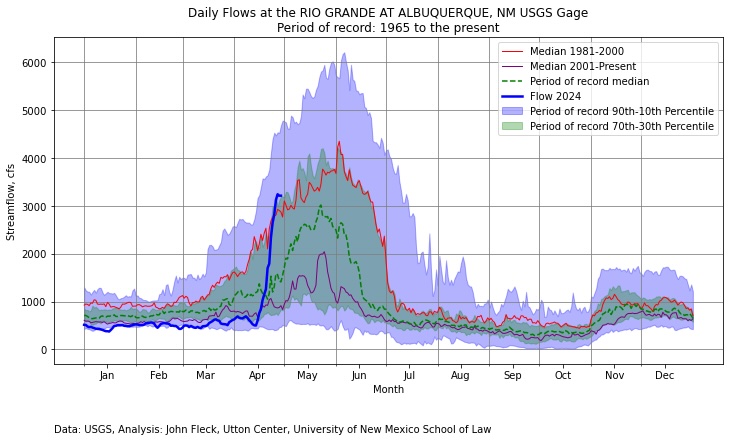A recent rapid warmup has brought high flows to the Rio Grande through New Mexico. But with a modest snowpack sitting in the mountains to the north, that means we should expect the early rise to be followed by an early drop.
Members of the Inkstain Rio Grande Rapid Response Team (IRGRRT) were busy over the weekend monitoring the river. (“Monitoring the river” actually just means “going for walks, bike rides, and boating the river” like we do nearly every weekend, but “monitoring the river” and “Rio Grande Rapid Response Team” sound cooler and more official than a bunch of river nerds goofing.)
IRGRRT team members saw enough water through the Albuquerque reach to float over many of the sandbars, and flows in some of the overbank shallows beyond the main river channel. Those overbank flows are a mixed bag – important for ecological system function, less helpful for meeting Rio Grande Compact deliveries to our downstream neighbors with whom we share this river.
Last year, with a much larger snowpack, we saw sustained flows this high (and higher) through the end of June, when the Army Corps of Engineers slammed on the brakes. The tail end of the 2023 runoff sat behind the upstream dams at Abiquiu and Cochiti until Nov. 1, when the Corps began releasing it to meet our delivery obligations to our downstream neighbors. That won’t happen in 2024.
This year’s flow shot up with the big warmup two weeks ago melting off the snow in a hurry. That’s the rapid drop you see in the snowpack graph above. It may already have peaked, with flows hitting 3,600 cubic feet per second at Otowi (the gage above New Mexico’s Middle Rio Grande Valley). In response, the Corps has dropped releases at Cochiti. At Albuquerque, the peak hit ~3,200 cfs, and has now settled under 3,000 cfs.
Thanks to all the IRGRRT volunteers, and Inkstain supporters.




John
As Natural Resource Trustee, about 2000 I commissioned a study of climate change effects on the Rio Grande and the Pecos by the Canadian Environmental Agency. Their work was excellent. It adumbrated exactly what you are reporting. Runoff would peak about May 1. Looks like they were right. Too bad we had to wait 25 years to find they were correct. I still have it somewhere.
Bill